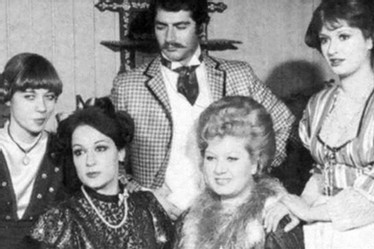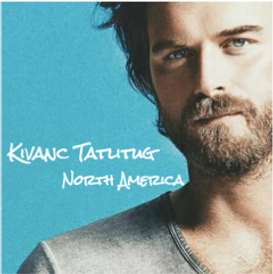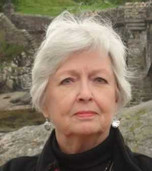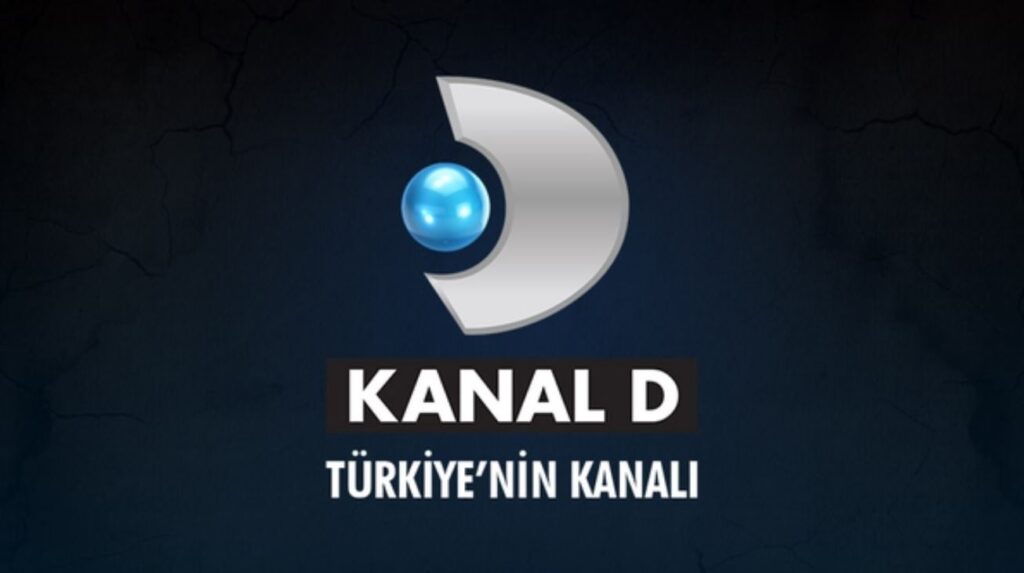What is it about Turkish TV dramas that make them have such wide international appeal and why are so many American women becoming fans of the genre?
Very simply, we might answer the question by saying women more often appreciate dramas that evoke strong emotions, women usually spend more leisure time in the home watching television, and women respond more favorably to handsome actors, both male and female, on screen. If we look more closely, we see that Turkish television series differ from regular American fare in theme, format, and characterization, approaching relationships and behaviors with more traditional concepts of the Middle East. Insight into Middle Eastern language and culture proves both educational and entertaining, and given that 49.6 percent of the world’s population is female, there is no surprise that Turkish exports of television series, second only to the US, have broad international popularity among women of all ages across the globe (countrymeters.info/en/World).
A little history of melodrama in the US may help explain why Turkish television series, considered melodrama, are growing in popularity here.
American audiences, particularly women, were conditioned to appreciate this dramatic form when they were introduced to romantic dramas as continuing or open-ended stories first with radio in the 1930’s, then on daytime television in 1949. Because the sponsors of these emotional series were usually soap companies such as Proctor and Gamble, Colgate, and Lever, and the target audience female, the term “soap opera” became the designated name for the melodramatic productions (“Soap Opera”).
American and Turkish series may be defined as melodrama, a dramatic work in which plot is more important than characters. The plot is full of action, violence, romance, and thrilling suspenseful moments which engage the viewer with strong emotions. Characters are simply delineated, sometimes appearing as stereotypes. Ben Singer, assistant professor of film studies at University of Wisconsin–Madison, states that “melodrama consists of 5 elements: pathos, overwrought or heightened emotion, moral polarization (good vs. evil), narrative structure of extreme coincidence or unexpected resolution of a problem, and an emphasis on action or violence” (“Melodrama”). I would add that in the visual medium of film, the lead male characters are usually exceptionally handsome, female leads beautiful. They are intelligent, ethical, have strong moral values, they are sometimes innocent, and they are often talented in business and the arts; while the villains may also exhibit a few of these qualities, they are most often exceptionally devious and malicious.

The first TV series in Turkey was produced in 1974 on TRT, a state-run channel which featured series based on Turkish classic novels
(Ask-i Memnu was the first, adapted from the 1899 novel by Halid Ziya Usakligil), but in the 1970’s, movies and the actors who starred in them were far more popular than TV series actors, and interestingly, these movie stars did not perform in any of the series (“Turkish Television Drama”).
The more popular Turkish television series began in Istanbul in the middle to late 1990’s when political and social policies (by a short-lived coalition government) drew secular Turkey closer to the European market and made private television companies a viable business. As a result of the demand for locally produced, quality television entertainment, eight highly competitive private television channels were established and began to develop an average of 60 series (televizyon dizileri) a year. These series, called “dizis,” began as 60 – 80 minute episodes, eventually becoming an average of 90 minutes between 2005 – 2010 (“Turkish Television Drama”).
Exporting dramas on a vast scale to Arab and Middle Eastern countries began in the late 1990’s-2000 when both religious and secular programs were popular. In 2008 Turkish series with a more Western flavor were purchased for the Middle East Broadcasting Center, an Arab channel, with Gumus leading the way in popular entertainment, its finale watched by 85 million viewers. Some of the most internationally prominent Turkish television dramas include Muhteşem Yüzyıl, Fatmagül’ün Suçu Ne?, Aşk-ı Memnu and Binbir Gece, and according to experts, beginning in 2010, the market for Turkish series expanded beyond the Muslim world into Latin America. Since then, Turkey has become second only to the United States in exporting television entertainment, replacing Mexico and Brazil’s television industry exports. The exportation of Turkish television dramas has had a huge impact of the economy of that country, bringing thousands of tourists each year to explore the various locations of the series. (“Turkish Television Drama”)

In 2016 the US internet movie company, Netflix, made several Turkish dramas available on its website, the most prominent of them Kurt Seyit ve Sura, adapted from a novel written by Nermin Bezman, a true love story based on the life and loves of the author’s grandfather. This intriguing short series of 21 episodes, roughly 2 hours in length but divided into shorter 55 minute segments totaling 46 episodes, explored the love of a young Crimean nobleman of Turkish descent serving in the Czar’s army and a very young Russian girl of a noble Russian Orthodox family. Set against the background of the Bolshevik Revolution and the British occupation of Istanbul, the young couple face dangers from the social and political upheavals of the time, but these dangers are no greater to their love than the absolute disapproval of their families. American women found the love of Seyit and Sura fascinating and the history and culture of the time and place uniquely absorbing. The stars of the series, Kivanc Tatlitug and Farah Zeynep Abdullah, established remarkable characterizations of the lovers with the added bonus of being beautiful to the eye. Women fell in love with the handsome young actor, and after repeated viewings of the series, explored his other film roles and created fan sites on Facebook to follow his career.

Kivanc’s successful career in television began when he was 22, but his national and international exposure began earlier. After suffering a knee injury which sidelined his hopes for a career in professional basketball, Kivanc Tatlitug began modeling in 2002 at the age of 19. He won Best Model of Turkey and Best Model in the World in 2002. Kivanc’s acting career began in 2005 in the series Gumus, the first Turkish series to be subtitled in Arabic and exported to the Arab world where his popularity soared as a leading man. The phenomenal success of his role as Mehmet created a demand for more Turkish drama in Saudi Arabia and other parts of the Arab speaking world. Following Gumus, he starred in several other series including: Menekse ile Halil in 2007 as Halil, Ask-i Memnu in 2008 as Behlul, Kuzey Guney in 2011 as Kuzey, Kurt Seyit ve Sura in 2014 as Seyit, and Cesur ve Guzel as Cesur in 2016. In 2007 he starred in the film Americans at the Black Sea, in 2010 he dubbed the role of Ken in Turkish for Toy Story 3 and in 2013 he starred in Kelebegin Ruyasi as the poet Muzaffer Tayip Uslu. He has also had a few minor roles, specifically in Acemi Cadi (2006) and Ezel (2010). As of December, 2017, Kivanc has completed the role of Ali in Hadi Be Oglum (Come My Son) which will be released in January, 2018, with English subtitles.

In his short film and television career, Kivanc has captured the hearts of women around the world and earned many awards and honorariums. He serves as a UN Ambassador for UNICEF, has been designated Best Actor by several of Turkey’s universities, awarded two Golden Butterfly Awards for Best Actor in a Leading Role, the Yeşilçam Cinema Awards for Best Actor in a Leading Role, the Best Actor award from SIYAD (Turkish Film Critics Association), GQ’s Man of the Year Award for 2017, and Seoul’s International Draw awards for Best Actor 2017. Most recently Kivanc was awarded the Atlin Klebek Award for the Expansion of Turkish Drama Internationally 2017.

Evidence of Kivanc Tatlitug’s popularity may be seen on Facebook where some 104 fan groups from around the world follow his life and career. The Kivanc Tatlitug North America Website (KTNA), created in May 2017, has been visited by more than 60,000 people from all over the world in a four week period, averaging some 10,000 views per week, and of that number more than 50% are American. According to the administrator of the site, the five internet platforms of KTNA (Facebook, Pinterest, IG, Twitter and YouTube) boast more than 35,000 fans and the fandom continues to grow. The Kivanc Tatlitug North American Forum has 1930 members with the greatest age range, 87%, from 25 – 64 years old (the largest number of members are ages 25 – 34 and 45 – 54). Currently, in the United States, membership in the forum includes women from every state in the union, Canada, Great Britain, Ireland, France, Poland, Germany, Spain, Italy, Greece, Pakistan, Turkey, Australia, India, the Philippines, Brazil, Argentina, the country of Georgia, Romania, and Bahrain. (Kivanc Tatlitug North America statistics)
The Middle East and Eastern and Western Europe have enjoyed Turkish series for several years, beginning in the early 2000’s, because of language and religious/cultural similarities. Some of the early exports were historical in nature, such as Muhteşem Yüzyıl (The Magnificent Century 2011), Diriliş: Ertuğrul (The Revival: Ertugrul 2014), others based on Turkish literature, Ask-i Memnu ( Forbidden Love 2008), and literary figures such as Kelebegin Ruyasi (The Butterfly’s Dream 2013). The exported series were filmed in the Turkish language but subtitles were provided for Arabic countries and other eastern nations. Many of the more recent series have adapted successful American television scripts to fit their cultural and social themes. Examples of such adaptations are Cesur ve Guzel (2017) from CBS’s The Bold and the Beautiful, Küçük Kadınlar (2011), an adaptation of Little Women, Kuzey Guney (2011), an adaptation of ABC’s 1976 series, Rich Man, Poor Man, and Ezel (2009), a modern adaptation of The Count of Monte Cristo. Now the American public can enjoy these series which are subtitled in English, most of which are currently available on Netflix (“Turkish Television Drama”).
So why are Turkish series becoming so popular in the US? In my opinion, it’s easy to answer that question. . .The genre of melodrama has long been popular in the US, beginning in the 1930’s when women were targeted by American entertainment to appreciate complex romantic plots. Perhaps the popularity of such novels, films and TV series lies in escapism, the need to be distracted from the unpleasant realities of daily life. The recent popularity of Turkish movies and TV series in the US lies in the availability of more of their translated series through Netflix, the complicated romantic plots of the stories which differ significantly from American television soap operas, the quality of the productions, the incredibly gifted, handsome actors, particularly Kivanc Tatlitug, the well-written scripts, the wonderful music, the beautiful locations, the intriguing themes, and most all, the introduction of the Turkish culture and language to the West.
*Wikipedia is the source of specific information.

Susan Watson is a retired English teacher living in Georgia. She enjoys painting, reading historical fiction, watching Turkish TV series, and playing bridge.







